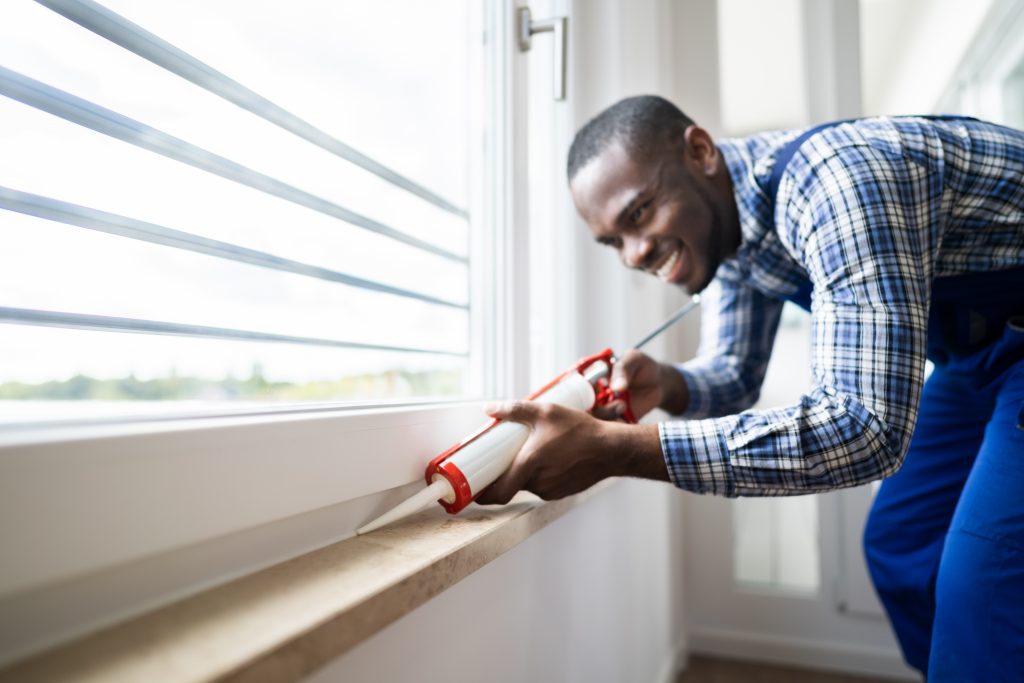If air leaks are causing your heating and cooling system to work harder, it’s time to get caulking. Try these techniques to get a smooth, mess-free seal.
“Thoroughly sealing the thermal envelope of your home can cut 10 percent from your energy bill,” advises Sherry Horvieth, consumer services director for Walton EMC. Filling cracks with caulk is one way to keep drafts at bay.
Admittedly, do-it-yourself caulking can be a little tricky for the beginner. But with the right materials and a little know-how, you can be sealing like a pro in no time.
Walton EMC suggests these techniques and hacks to get a smooth, mess-free seal.
- CHECK the weather. Yes, exterior caulking can be done at this time of year in northern Georgia, as long as you pay attention to conditions. The best time to apply caulk is during dry weather when the outdoor temperature is above 45 degrees F. Make sure there’s no rain in the forecast for at least 3 three hours to give caulk time to set before it’s hit with moisture.
- CHOOSE the right caulk. The selection of caulks found in home improvement stores can be mind-boggling. Know your intended use and look for caulk products labeled for the specific situation. For instance, if you’ll be sealing air leaks in a humid spot such as a bathroom, look for interior caulk that’s both waterproof and resistant to mold and mildew. When caulking seams between windows and masonry siding, you’ll need an exterior caulk that’s compatible with both surfaces. The Family Handyman provides a helpful guide for choosing the right caulk for the job.
Note: When deciding how much caulk to purchase, consider that you’ll probably need a half-tube per window or door.
- GET a good gun. Experts recommend using a dripless gun with a cradle cage. This type of caulk gun releases pressure on the tube when you stop squeezing the trigger, giving you more control of the flow. Add-ons like a built-in nozzle cutter, seal punch rod and ladder hook will also make the job easier. Pay attention to the thrust ratio, too. The higher the ratio (such as 10:1), the less pressure you need to get the caulk out of the tube. A good consumer-grade gun with all of these features can be purchased at local home improvement stores for less than $10. Learn more about caulk guns.
- START with a clean surface. Don’t attempt to put fresh caulk over old caulk; it won’t seal the leak but will be a mess. Remove existing caulk with a utility knife, razor blade, putty knife or scraper. Clean away all paint, dirt, dust, grease and debris. If you’re removing silicone caulk, make sure all residue is completely removed. Wipe the joint surface with rubbing alcohol or an over-the-counter disinfecting spray. Finally, rinse thoroughly with water and dry.
- TAPE the area. Unless you have extraordinary caulking skills, this is a must. Attach strips of painter’s tape about 1/8 inch away from both sides of the seam to mask off areas where caulk should not be applied. After you’ve applied caulk and smoothed it, remove the tape before the sealant begins to set. To remove the tape, lift the end and pull up at a 45-degree angle, away from surface.
- CUT carefully. A line of caulk is called a “bead” and the width of bead is determined by where the nozzle is cut. A common mistake is cutting off too much of the nozzle tip, leaving a hole that’s too big for the intended work. If you have various-size gaps to fill, cut the tip small — about 1/16 inch — and do the small gaps first, then cut it bigger for the larger gaps.
- USE both hands. It takes two hands to control a caulking gun. Use your dominant hand to hold the gun and pull the trigger, and support the barrel of the gun near the tip with your other hand. Also be sure to keep your wrists straight, moving your elbows and body when running a bead. For example, if caulking a vertical seam, start at the top and as you progress downward, bend your elbows—or knees—to caulk lower while maintaining your wrist position. Bending your wrists would alter the angle of the caulking gun, changing the appearance of the bead.
- PUSH, don’t pull. Try to push the caulk into the gap rather than dragging it over the gap. This greatly increases the odds the caulk will adhere to both surfaces.
- MEET in the middle. When you have a long bead to run and can’t get it done in one shot, don’t start again where you left off. Instead, caulk from one end to the middle of the seam and stop. Then, start at the other end and caulk to meet the first bead. This will result in a uniform bead.
- FINISH with your finger. You don’t need a fancy “finishing tool” to smooth a bead of caulk. Use your finger instead. Moisten your fingertip in warm soapy water and drag it with light pressure along the bead. The best way to smooth the bead is to start about 6 inches from the bottom and smooth that small section first. Then, move up another six inches and smooth that section next, pulling downward toward the section you just smoothed. Amateurs often try to smooth the entire bead at one time, which causes excess caulk to build up and overflow on the sides of the seam.
MORE
